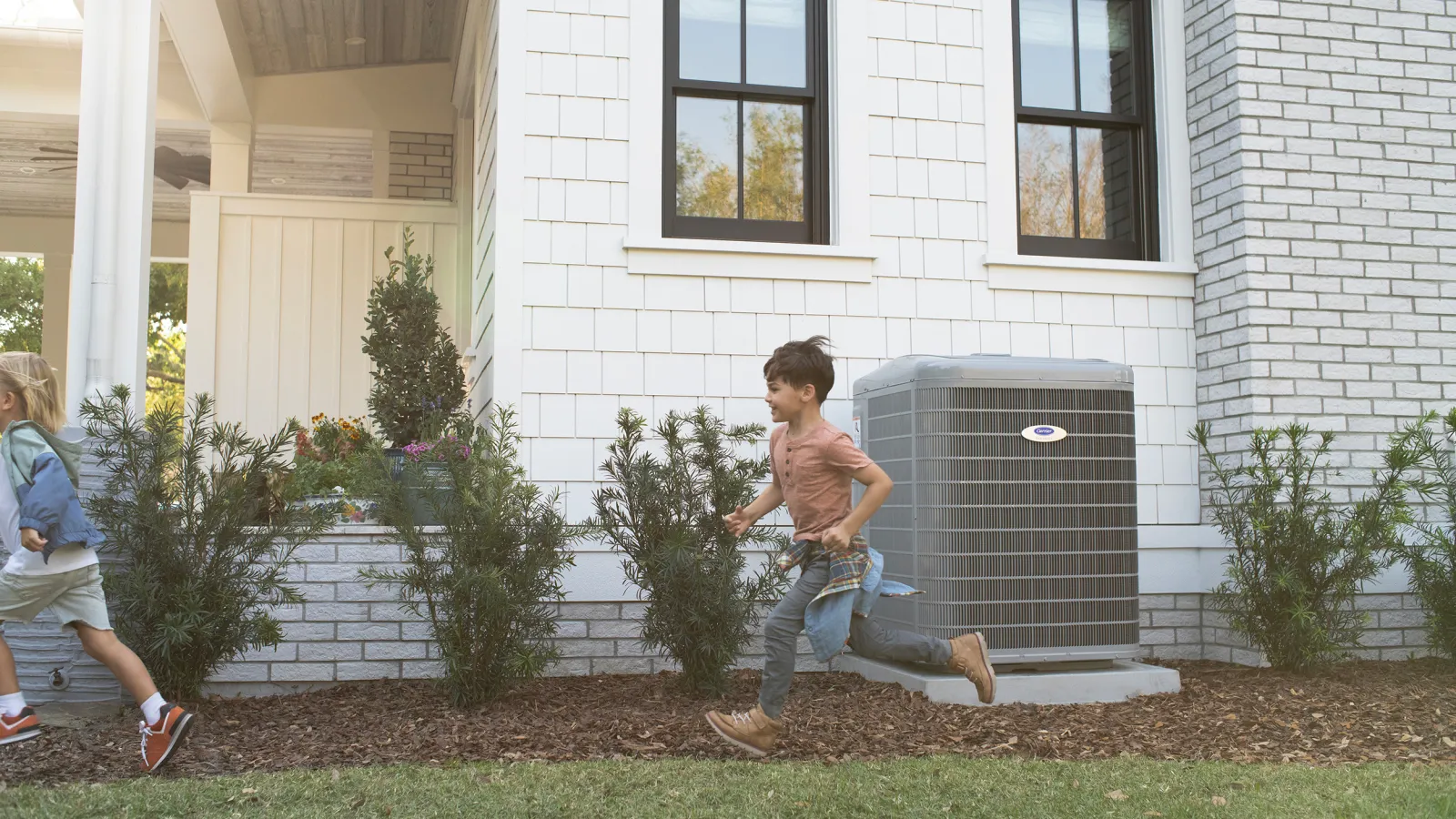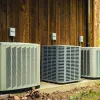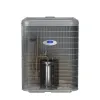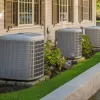So, it’s 93 degrees outside and your air conditioner froze up. There is ice on the outdoor unit, even in this incredible heat. Amazing, right?
Amazing… and bad. Bad.
There are several reasons why your outdoor AC components might freeze up, and we’ll explore them in a bit. First, let’s consider the consequences of a frozen air conditioner.
If you’re staring at this problem right now at your Atlanta area home, the PV Heating, Cooling & Plumbing team can help. Contact us today to get your system cooling again!
A frozen air conditioner will not cool your home.
That’s the main reason a frozen air conditioner is a bad news. It simply won’t work properly! If you let the problem persist, it can also damage your entire system.
Ice, as you probably know, expands. And when it collects on your HVAC components, it can expand enough to break them. If you don’t catch the problem soon enough, you won’t just be hot and uncomfortable – you could be looking at an expensive repair.
Not a pleasant scenario for a 93-degree day, right?
Dirty air filters can cause this problem.
If your outdoor unit is frozen and you can’t remember the last time you changed your air filter, you might have identified your problem.
The dirtier an air filter gets, the more it can restrict airflow through your system. If you change or clean your filter per the manufacturer’s instructions, you’ll be fine. But if you neglect your filter for several months (years?), you’ll starve your system of air.
How does this lead to a frozen AC? Well, a typical central air conditioning system consists of an indoor unit, which contains the evaporator coil, and an outdoor unit, which is where the compressor lives. A refrigerant line runs between the two parts, cycling refrigerant around the system to remove heat from your home. When a dirty air filter restricts airflow, there’s not enough air passing through the system to transfer heat from your home to the refrigerant. As a result, the refrigerant stays colder than it should.
So cold that the moisture on the coil turns to ice. Typically, your evaporator coil and your outdoor unit will be frozen over. The outdoor part is just what you see first.
If a dirty filter is the source of your troubles, all you have to do is change it. Just be aware that the ice on your evaporator coil will melt, so you’ll need to collect or absorb the water before it causes any damage to your home.
Low refrigerant levels could be to blame.
What if your filter isn’t dirty, though? What if you’re looking at a frozen AC even though you just changed the filter?
Your system might be low on refrigerant. Either the refrigerant charge is off or you’ve got a leak somewhere. Only a technician can tell you for sure.
Here’s what’s going on. You’ve set your thermostat to a comfortable temperature. 75 degrees say. When you do this, you’re telling the system, “Make the refrigerant running through these coils expand enough to cool my home to 75 degrees.” That’s all fine and good when there’s enough refrigerant in the system. It’s not so great when you’re telling a smaller quantity of refrigerant to expand just as much as the normal amount would have to expand.
Ultimately, the temperature of the coil itself hits the freezing point and ices over.
If you let this go on for too long, you might damage your compressor. The refrigerant cools the compressor. When refrigerant levels are low, the compressor isn’t being cooled sufficiently. It overheats.
To fix this problem, an HVAC technician has to check your refrigerant charge. If the level is low, there’s a good chance you’ve got a leak.
Here’s the thing about refrigerant leaks…
You might have to replace the whole system if you’ve got one. Ok, you don’t have to. But replacement might be your most cost-effective option.
The reason? R-22.
If you own an HVAC system manufactured before 2010, there’s a good chance it uses R-22 refrigerant, also known as Freon. Per EPA rules, R-22 is on its way out. After 2020, it won’t be available for sale. It’s still around today, but it gets more expensive all the time.
Anyway, if your R-22 system starts leaking, there’s a good chance you’ll have to replace the evaporator coil. And you’ll have to replace it with another coil built for R-22 – a product requiring an ultra-expensive refrigerant that’s nearly obsolete.
It would be like buying new VCRs for all of your TVs. Or clearing space in your home office for a new fax machine.
Most of the time, it makes more financial sense to invest in a new system that uses R-410A refrigerant. R-410A is the standard these days, and it’s not going anywhere anytime soon. You’ll also have the option to upgrade to a more efficient system (higher SEER). R-22 systems top out at 14 SEER, which isn’t very efficient by modern standards.
Think about it like this: If you replace the coil in an R-22 system and the coil leaks again in 2021, you’ll have to replace the whole system. You’re out the cost of the R-22 coil, which is expensive, and the cost of a new system. If you just get a new system now, you probably won’t leak in 2021. But even if you do, it’s covered by a 10-year parts warranty and 10-year labor warranty. Sure, you had to buy a new system, but you didn’t have to buy an evaporator coil for the obsolete system in the meantime. Put simply, you’re richer.
And if you do have leaks in your R-410A system, you can replace the coil with one that won’t be obsolete in just a few years. Assuming it’s under warranty, you won’t even have to pay for it.
The good news about that frozen AC? It’s a problem you can solve.
If you take action soon enough, you can often service the system before anything breaks. If a dirty filter is a problem, you can clean or change it. If you have an improper refrigerant charge in an R-410A system, an HVAC technician can recharge it for you.
Just don’t let the problem fester. Address it, fix it, and take precautions to avoid the same issue down the line.
You’ll stay comfortable all summer. And your energy bills won’t take too hard a hit.






